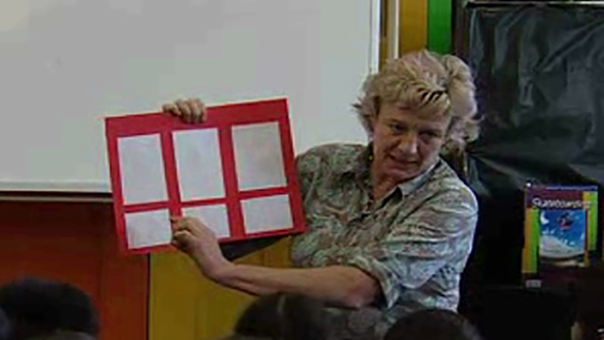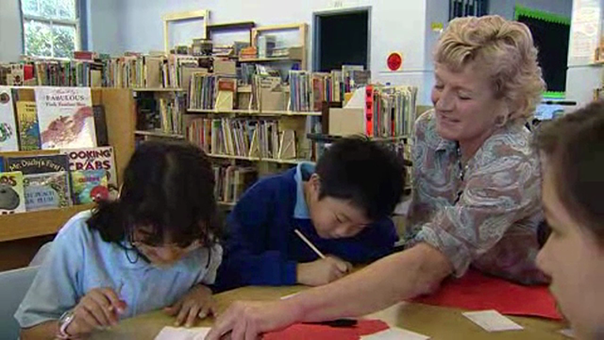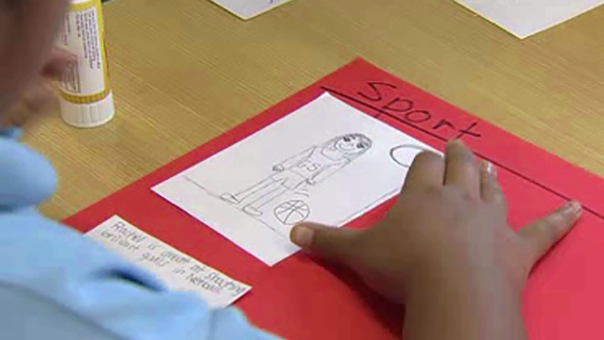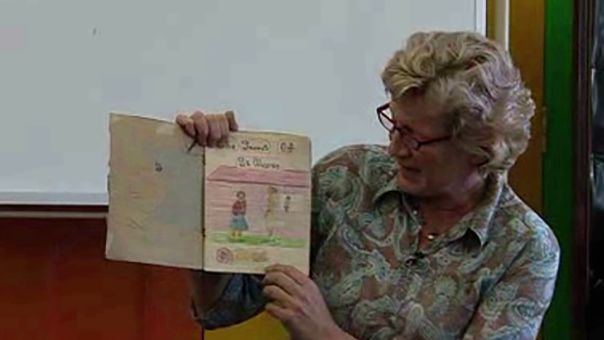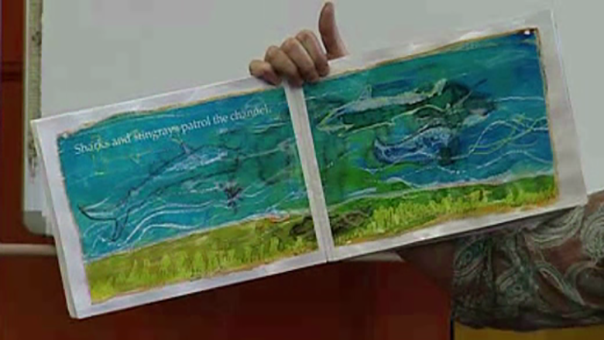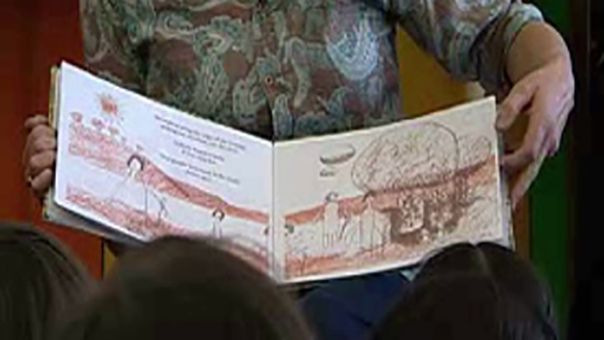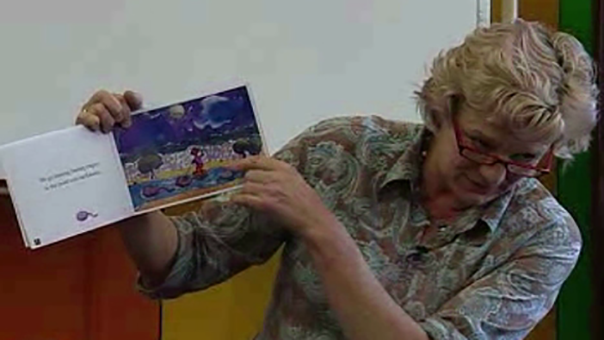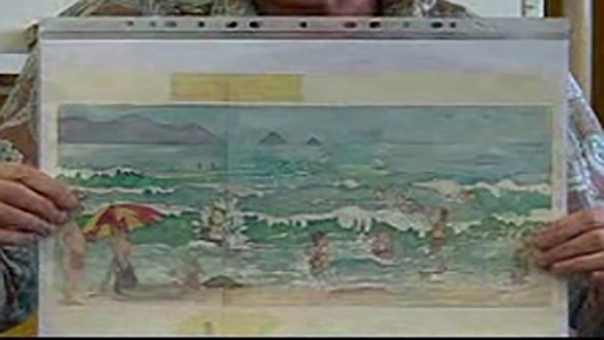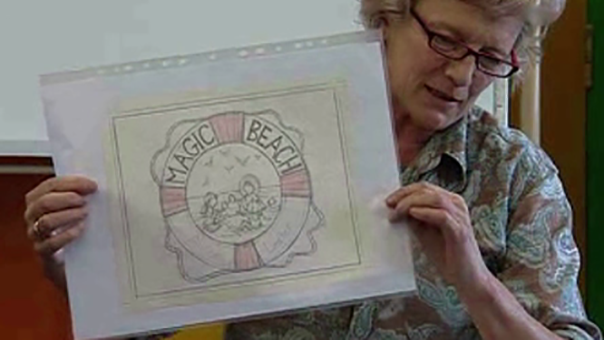10. Making your own book - Drafting
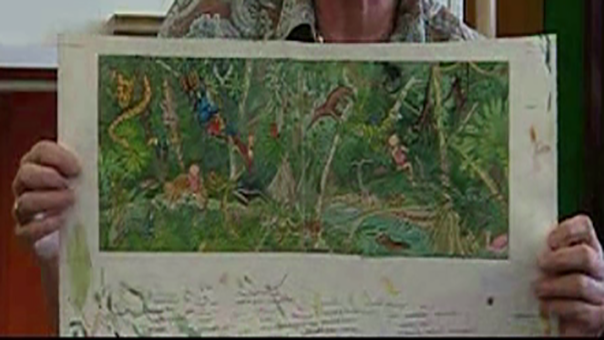
Viewing guide
Teacher to:
-
prepare for the comparison of the draft and final version of the opening line of ‘Imagine’ (get the sentences from the ‘Transcript’ section under the ‘Teaching notes’ section on this page)
-
organise equipment such as cameras, laptops, or art supplies needed for creating a proper draft of the book.
Teacher to:
-
write on the board or hang up a printed copy of the two versions of the first line of ‘Imagine’ side by side for the class to compare
-
guide class discussion on strategies and rules for drafting and writing.
Students to:
-
use the think-pair-share strategy to create some rules for drafting and writing based on Alison’s advice
-
discuss the improvements Alison made to the text by comparing her first draft to the published book
-
record the strategies they will use to draft and revise their work in their journal
-
continue to work on their book.
This lesson is designed to guide students to create a proper draft of their text, with draft images if it is a picture book. Students should apply Alison’s ideas about not worrying about perfection at first and creating a whole text or draft first then going back to refine. By the end of this activity students should have a complete draft with all the images and completed narrative ready to refine in later lessons.
Using digital technology
Creating the final book with digital technologies is simply a matter of asking students to turn their draft book into a digital one using the technology and software available to your class. The book can be published for printing using presentation software such as Google Slides or Microsoft PowerPoint, as a website using Google Sites or as a multimedia document using Microsoft Sway. There are also digital book creating apps available on iPads such as Book Creator. Images can be created and edited using Microsoft Paint, GIMP or Adobe Photoshop. Painted, drawn or sculpted images can be scanned or photographed and then added to a digital document. Alternatively you could choose another app or piece of software from the NSW Department of Education Learning tools selector.
Learning intention
Completing this activity affords students the opportunity to:
-
compose, edit and present well-structured and coherent texts (EN3-2A)
-
use knowledge of sentence structure, grammar, punctuation and vocabulary to respond to and compose clear and cohesive texts in different media and technologies (EN3-6B)
-
think imaginatively, creatively, interpretively and critically about information and ideas and identifies connections between texts when responding to and composing texts (EN3-7C)
-
recognise, reflect on and assess their strengths as a learner (EN3-9E)
-
optional - make artworks for different audiences, assembling materials in a variety of ways (VAS3.2)
-
optional - Learning across the curriculum: Information and communication technology capability.
Alison Lester: 'Imagine' is a picture book that I did a long time ago now. It's a pretty old book. And sometimes when I do my books I actually have a bright idea and I ring my publishers up and say, 'I've got this really good idea for a book' and then other times they will say, 'We'd like you to do a book about something.' And that's what happened with this book. They asked me if I'd do an animal book for little kids. So I went away and looked at lots of books and there were so many beautiful ones, I thought I'd like to make my book like a game. Now, whenever I make a book I make a dummy. It's like, not a dummy-stupid, a dummy-pretend. It's usually the same size as the book is going to be but for some reason I did this as a teeny, teeny, tiny little one. But it's a really important thing for me to do when I'm planning my book. You can see a little bit of scribble there that says 'Imagine a place deep in the jungle, ocelots snarling, chimpanzees yapping, parakeets flashing and crocodiles snapping.' And then there's a tiny little picture of some kids playing in a tree. And when you turn the page there's just a bit of scribble but it says, it basically says, 'Big page full of rainforest.' So that was the start of it. When I had written it out maybe twenty times the rhyme became, 'Imagine if we were deep in the jungle where butterflies drift and jaguars prowl where parakeets squawk and wild monkeys howl ...' So the rhyme has got a lot better, hasn't it? I think it's a good thing to remember when you're writing that sometimes if you get a nice rhythm in your head when you're writing, write it down even if the words aren't perfect because you can work on the words and fix them up but the rhythm is often a hard thing to get back. And then that's the page that I described as being full of everything. Now that page - I'll make a little pile down here. Here's a photocopy of that drawing when it was only partly done. So you can see how when I start my drawings I'm quite messy. I try to be too tidy and then, once I get them fairly right, with everything in the right place, I then trace them. So that's a tracing, but I've used two steps, I haven't just traced it. I've traced it really lightly and then I've gone over it with a pencil and drawn it up so I press harder in some places and soft in others. You can see that that paper is lovely to draw on but you can tell it wouldn't be very nice to paint on, would it be? It's too thin, like, yeah, it would just get wet and fall to pieces. So I photocopy that drawing onto a piece of watercolour paper and colour that. And this bit is really fun, I just love this colouring in bit. It's like having my own colouring book. Probably takes, I don't know, a few days to paint that. And you can see all the times that I've tested my paint. A couple of things I never do, I never use paint straight out of the tube. I always mix up a new colour using a few other colours. And I never put my paintbrush onto the page without testing it first. And here's a piece of paper that's been underneath something I've been working on. So you can see all those tiny little brushstrokes where I've just tested it to make sure that I've got the colour right. Because sometimes you might mix something up and you think it's a bit darker than it is, or a bit lighter. I always do that to make sure it's okay.


